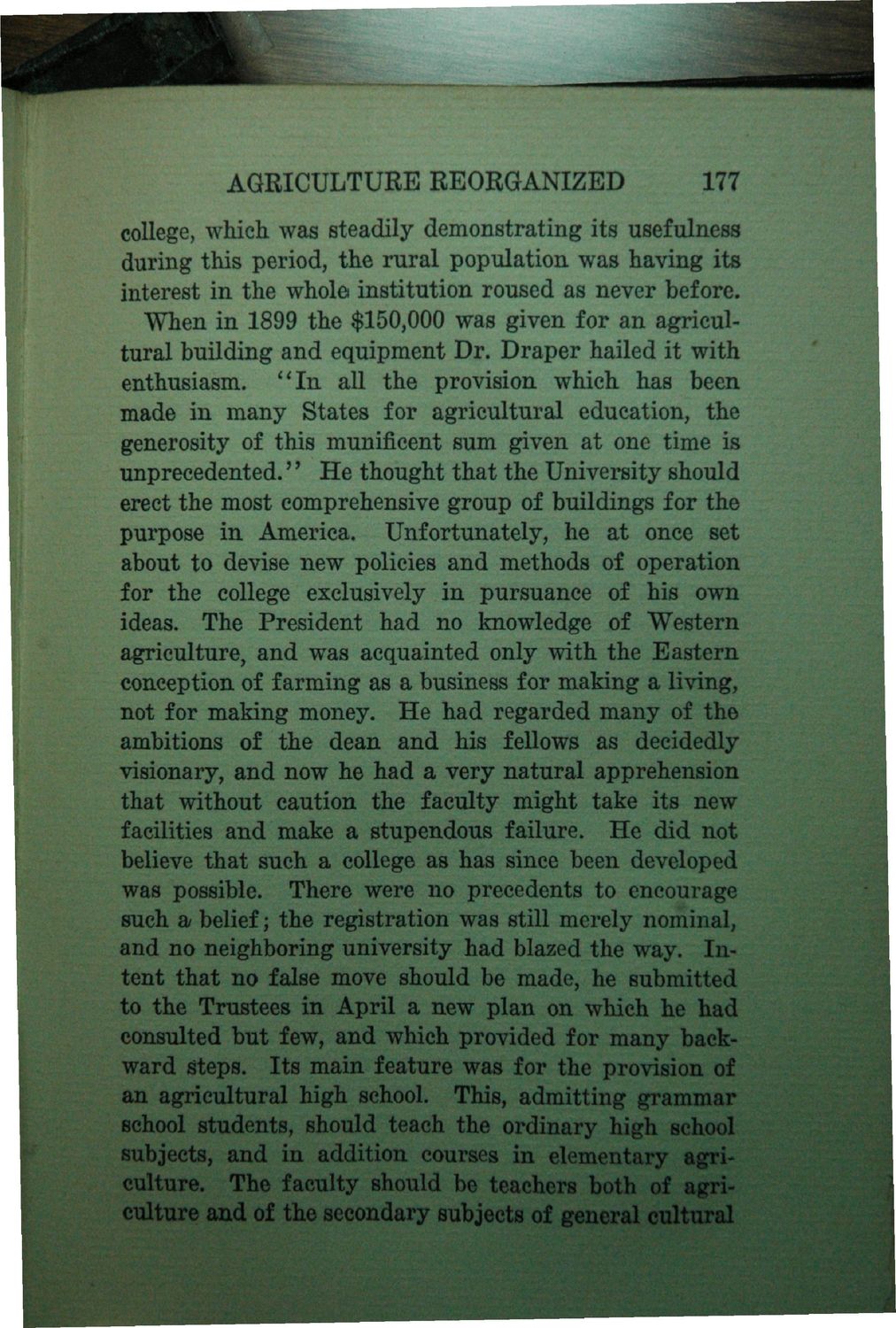| |
| |
Caption: Book - History of the University (Nevins)
This is a reduced-resolution page image for fast online browsing.

EXTRACTED TEXT FROM PAGE:
AGRICULTURE REORGANIZED 177 college, which was steadily demonstrating its usefulness during this period, the rural population was having its interest in the whole institution roused as never before. When in 1899 the $150,000 was given for an agricultural building and equipment Dr. Draper hailed it with enthusiasm. " I n all the provision which has been made in many States for agricultural education, the generosity of this munificent sum given at one time is unprecedented." He thought that the University should erect the most comprehensive group of buildings for the purpose in America. Unfortunately, he at once set about to devise new policies and methods of operation for the college exclusively in pursuance of his own ideas. The President had no knowledge of Western agriculture, and was acquainted only with the Eastern conception of farming as a business for making a living, not for making money. He had regarded many of the ambitions of the dean and his fellows as decidedly visionary, and now he had a very natural apprehension that without caution the faculty might take its new facilities and make a stupendous failure. He did not believe that such a college as has since been developed was possible. There were no precedents to encourage such a belief; the registration was still merely nominal, and no neighboring university had blazed the way. Intent that no false move should be made, he submitted to the Trustees in April a new plan on which he had consulted but few, and which provided for many backward Steps. Its main feature was for the provision of an agricultural high school. This, admitting grammar school students, should teach the ordinary high school subjects, and in addition courses in elementary agriculture. The faculty should be teachers both of agriculture and of the secondary subjects of general cultural
| |